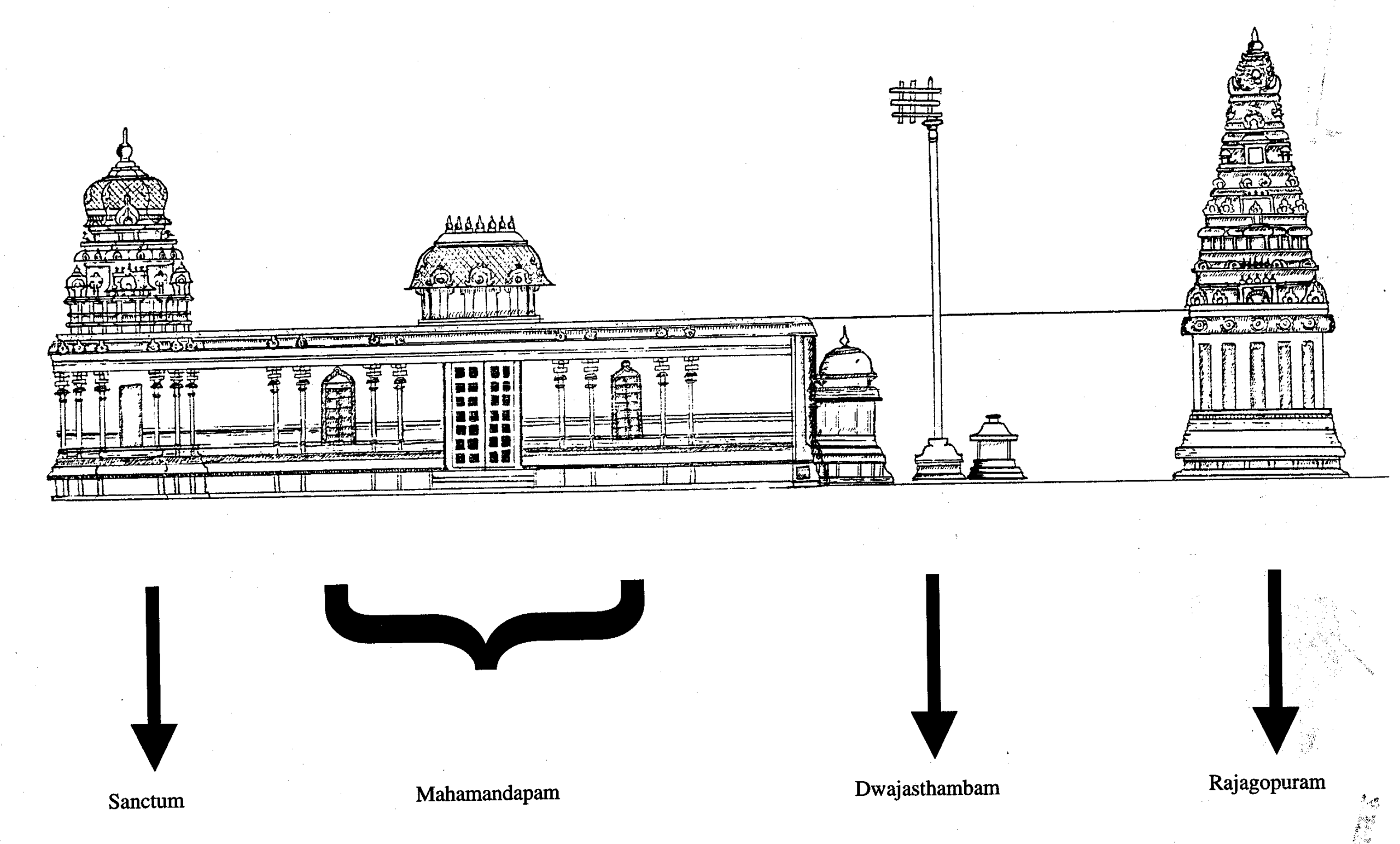 |
|
Significance of Rajagopuram, Dwajasthambam and Bali Peetam: Rajagopuram: The very name implies “grand entrance tower of the temple.”Depending on its size, a temple can have one or more towers representing different entrances of the temple. Rajagopuram is the main entrance. It is in line with the main sanctum, Dwajasthambam and Bali Peetam. Normally, the Rajagopuram will be the largest in size. The Rajagopuram is a fine representation of Hindu temple architecture. It has many sculptures and decorations placed in it, meeting the requirements of a solid structure. When the deities are taken out of the temple, they leave and re-enter the temple via the Rajagopuram. If the temple structure can be compared to a human body, the main sanctum is the head, Mahamandapam the central portion of the body and Rajagopuram the feet. Sri Lakshmi Temple’s Rajagopuram stands fifty feet tall from the ground. It has many beautiful architectural sculptures in it,thanks to the work by Sri Muthiah Sthapathi of Madras and his Silpis. It took more than two years to complete this structure. As part of the dedication ceremony, special Dwajasthambam: This literally means “flag pole.” This is placed between the Rajagopuram and the main sanctum. Devatas representing “Sankam”, “Chakram” and “Yupam” reside here. A special tree, fifteen feet in height, was brought from India, and has been placed and clad with brass decorations. Special flags will be raised during each of the festivals that will be conducted for Sri Lakshmi and other sanctums of the temple to mark the occasions. Daily pooja will also be performed for the Dwajasthambam. Bali Peetam: This is placed between the Dwajasthambam and the Rajagopuram,and is “the seat of offerings”. Final services will be conducted at this site after the completion of the daily pooja for all the deities in the temple. |
************************* |
RaajaGopuram
Sri Lakshmi Temple – Rajagopuram Details

